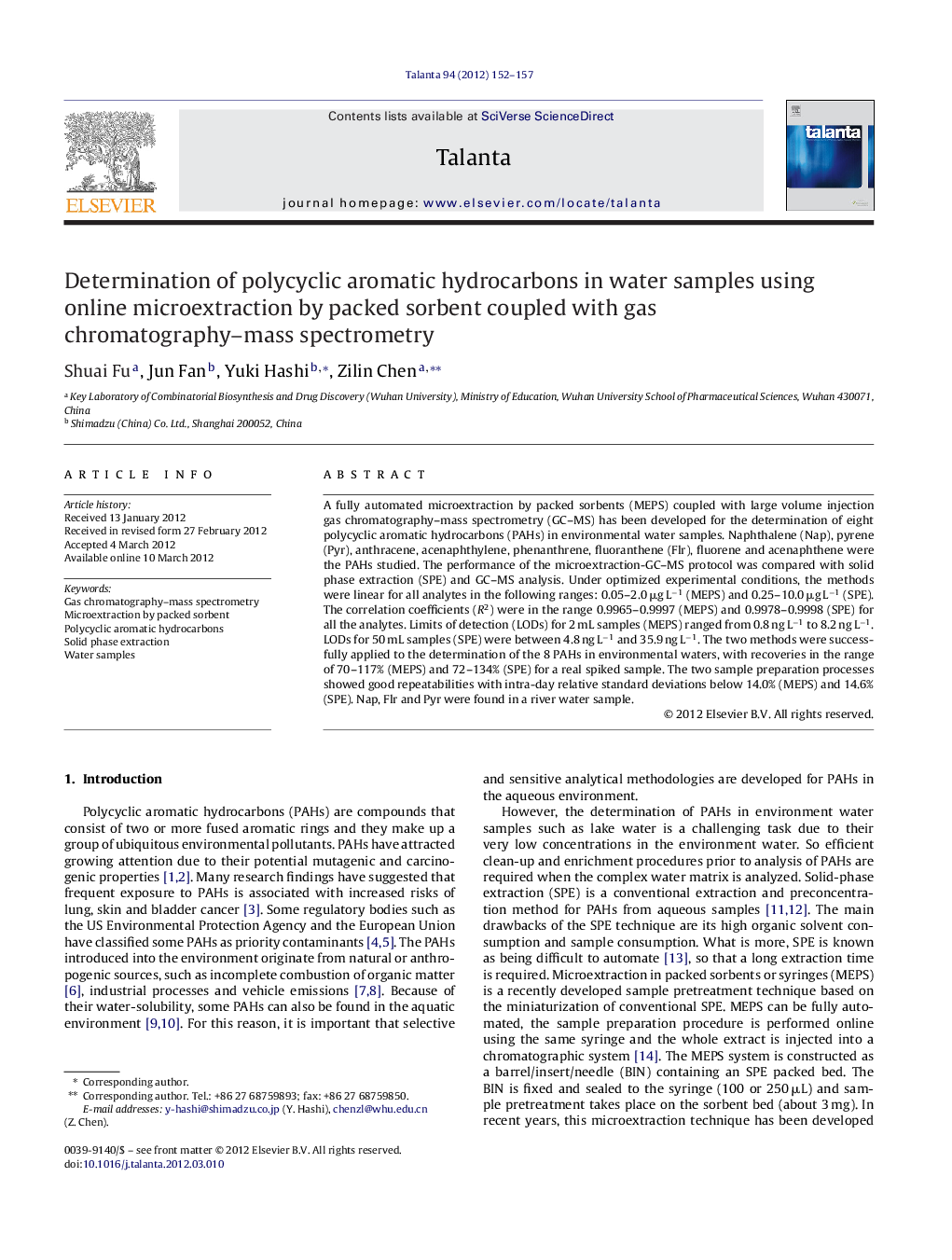| Article ID | Journal | Published Year | Pages | File Type |
|---|---|---|---|---|
| 1245628 | Talanta | 2012 | 6 Pages |
A fully automated microextraction by packed sorbents (MEPS) coupled with large volume injection gas chromatography–mass spectrometry (GC–MS) has been developed for the determination of eight polycyclic aromatic hydrocarbons (PAHs) in environmental water samples. Naphthalene (Nap), pyrene (Pyr), anthracene, acenaphthylene, phenanthrene, fluoranthene (Flr), fluorene and acenaphthene were the PAHs studied. The performance of the microextraction-GC–MS protocol was compared with solid phase extraction (SPE) and GC–MS analysis. Under optimized experimental conditions, the methods were linear for all analytes in the following ranges: 0.05–2.0 μg L−1 (MEPS) and 0.25–10.0 μg L−1 (SPE). The correlation coefficients (R2) were in the range 0.9965–0.9997 (MEPS) and 0.9978–0.9998 (SPE) for all the analytes. Limits of detection (LODs) for 2 mL samples (MEPS) ranged from 0.8 ng L−1 to 8.2 ng L−1. LODs for 50 mL samples (SPE) were between 4.8 ng L−1 and 35.9 ng L−1. The two methods were successfully applied to the determination of the 8 PAHs in environmental waters, with recoveries in the range of 70–117% (MEPS) and 72–134% (SPE) for a real spiked sample. The two sample preparation processes showed good repeatabilities with intra-day relative standard deviations below 14.0% (MEPS) and 14.6% (SPE). Nap, Flr and Pyr were found in a river water sample.
► Fully automated microextraction by MEPS coupled with large volume injection GC–MS. ► High sensitive analysis of polycyclic aromatic hydrocarbons in environmental water. ► A better sensitivity with MEPS compared with conventional SPE and GC–MS analysis. ► MEPS minimizes the volume of organic solvent for the elution and sample volumes. ► MEPS–GC–MS could be used for screening and monitoring PAHs in environmental waters.
